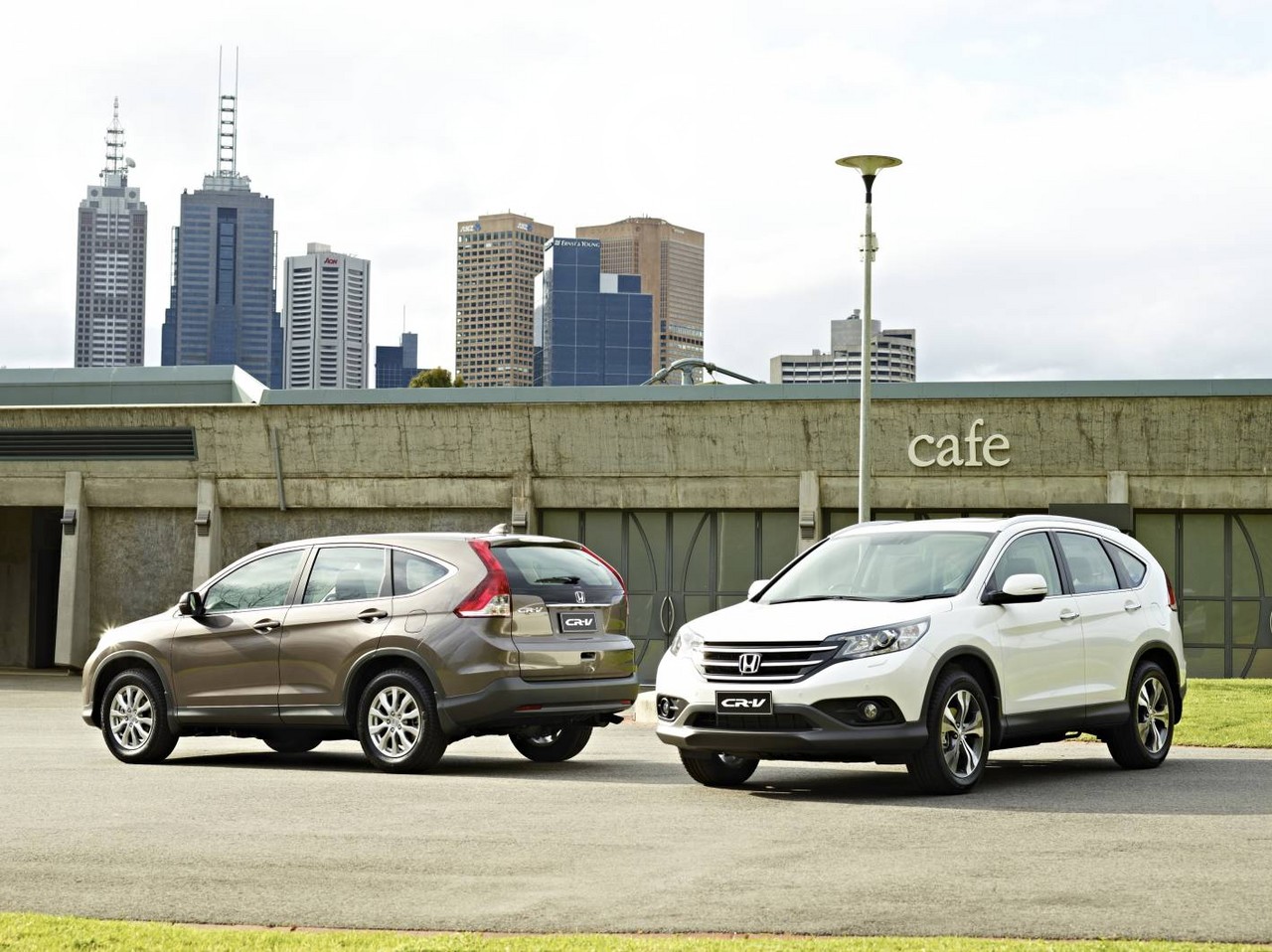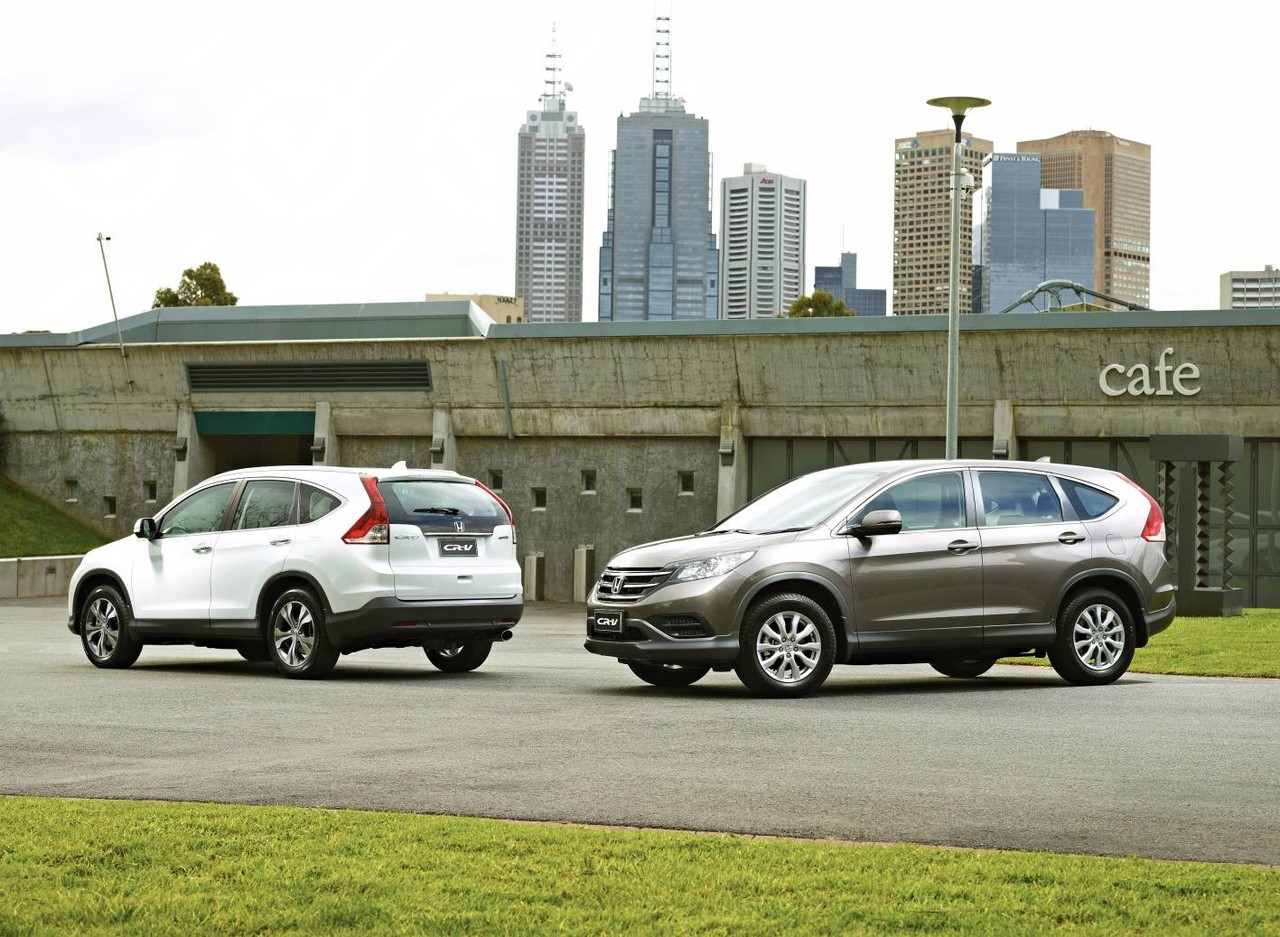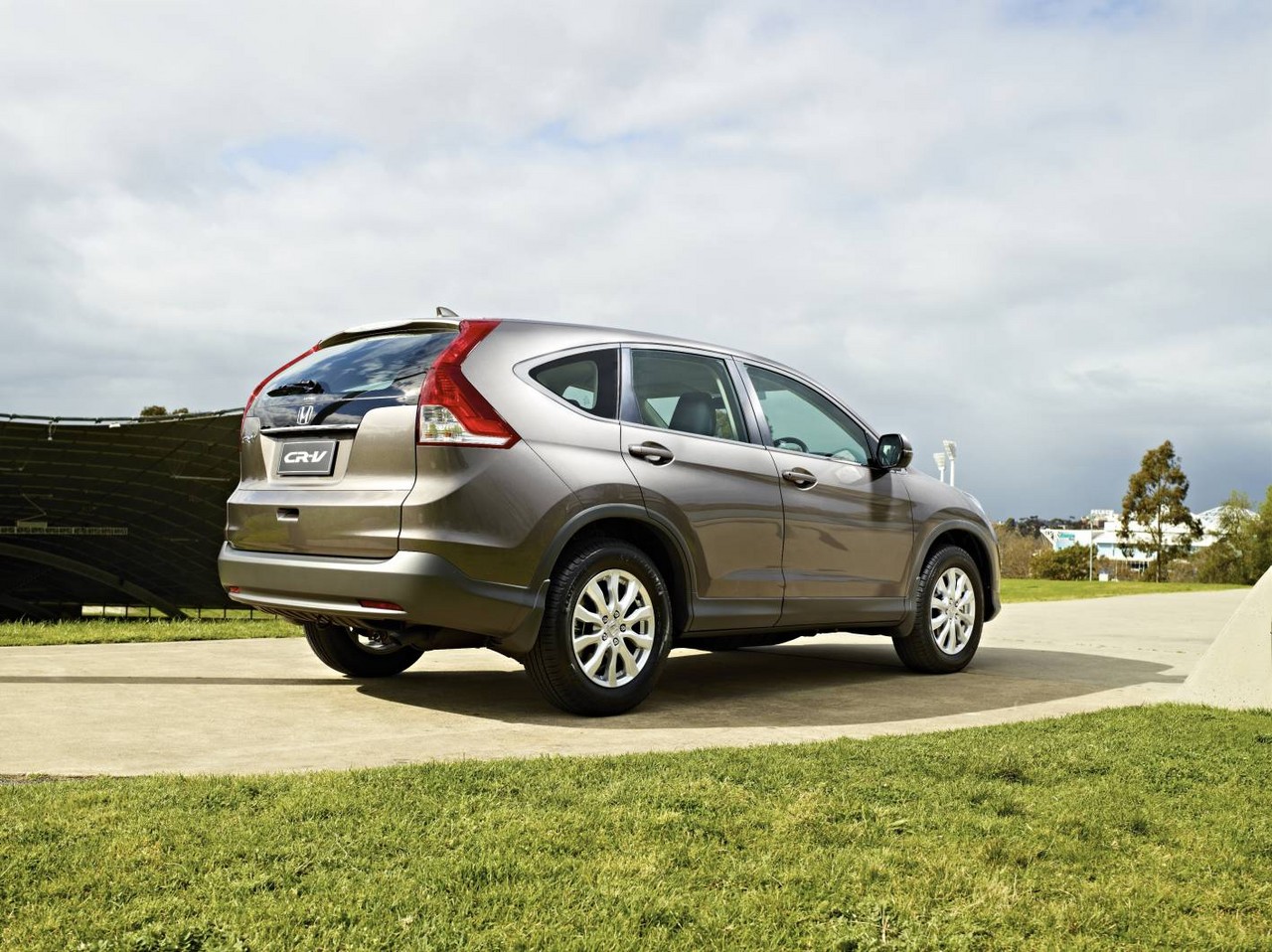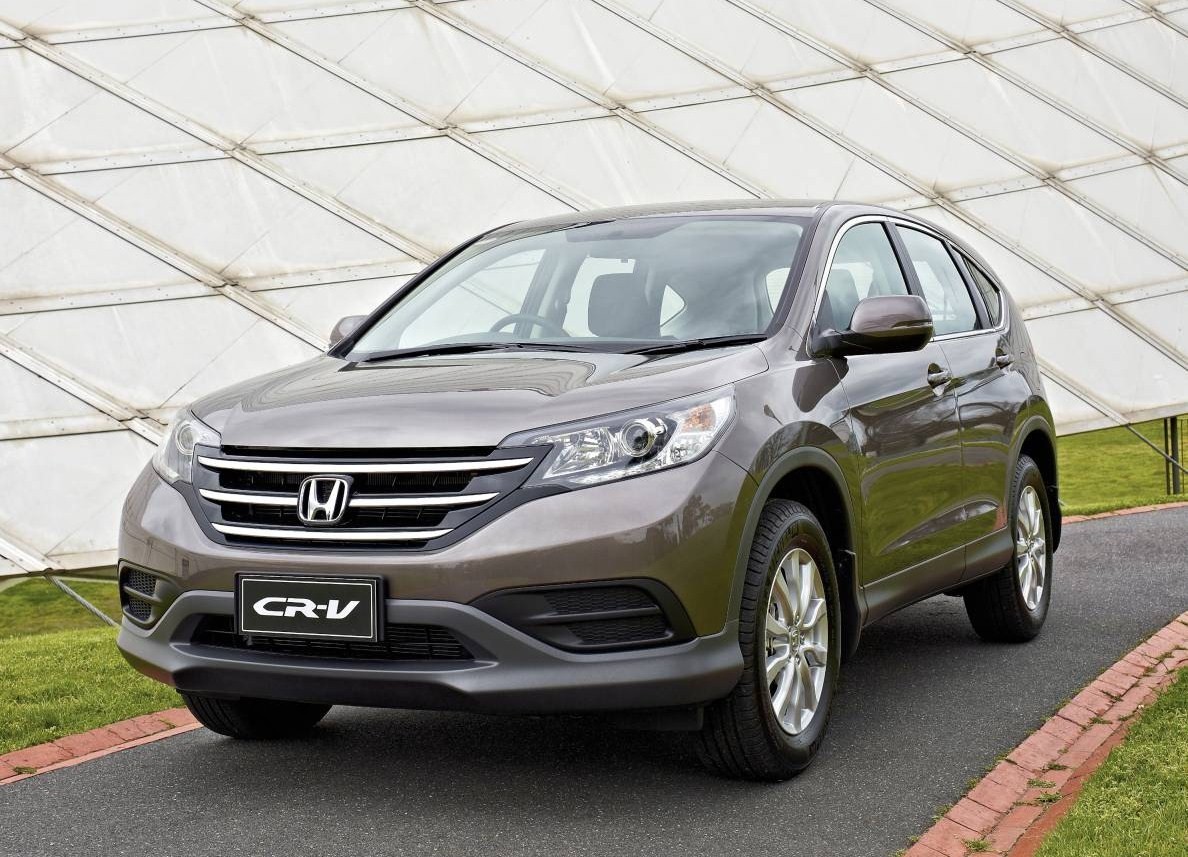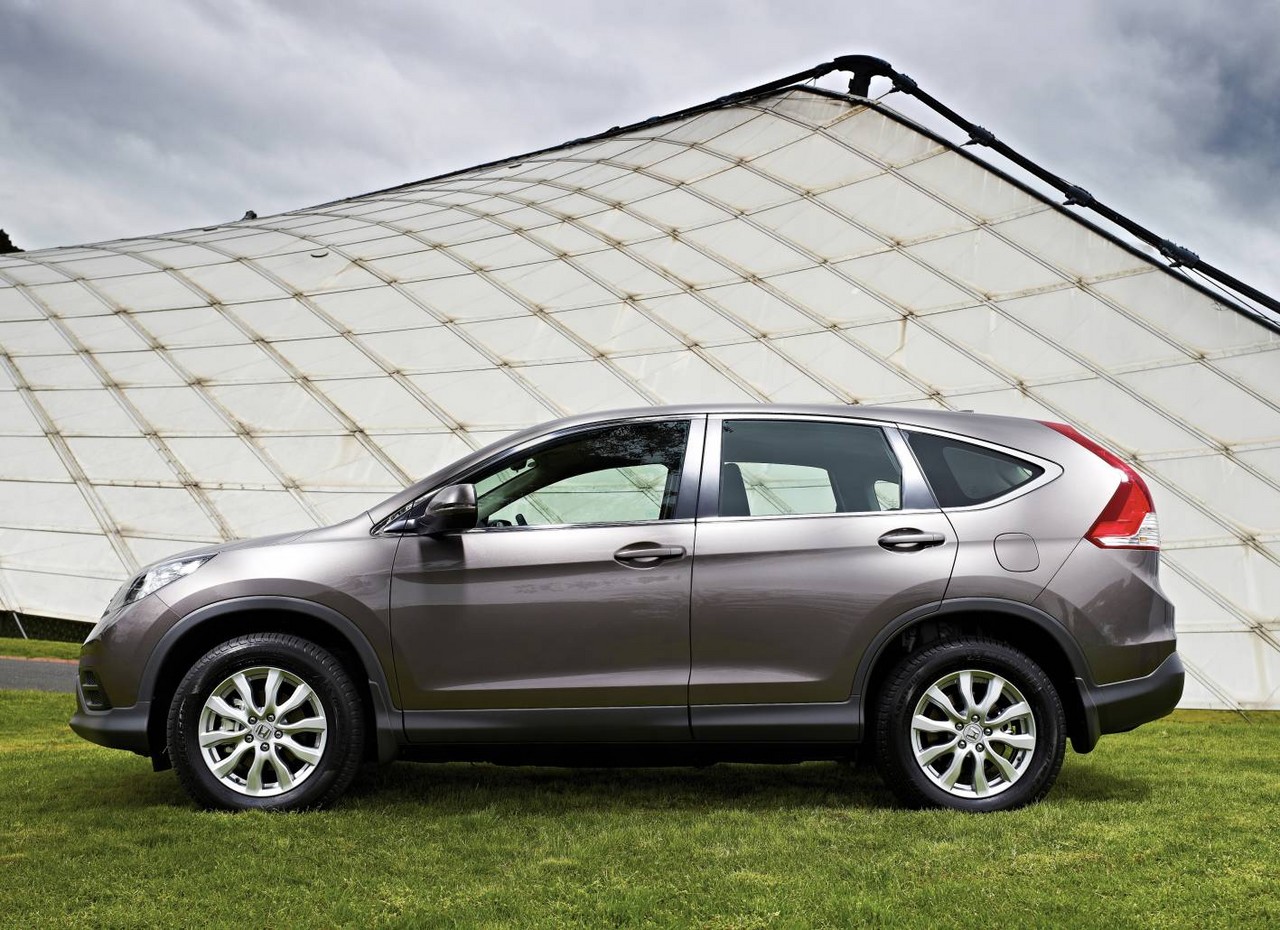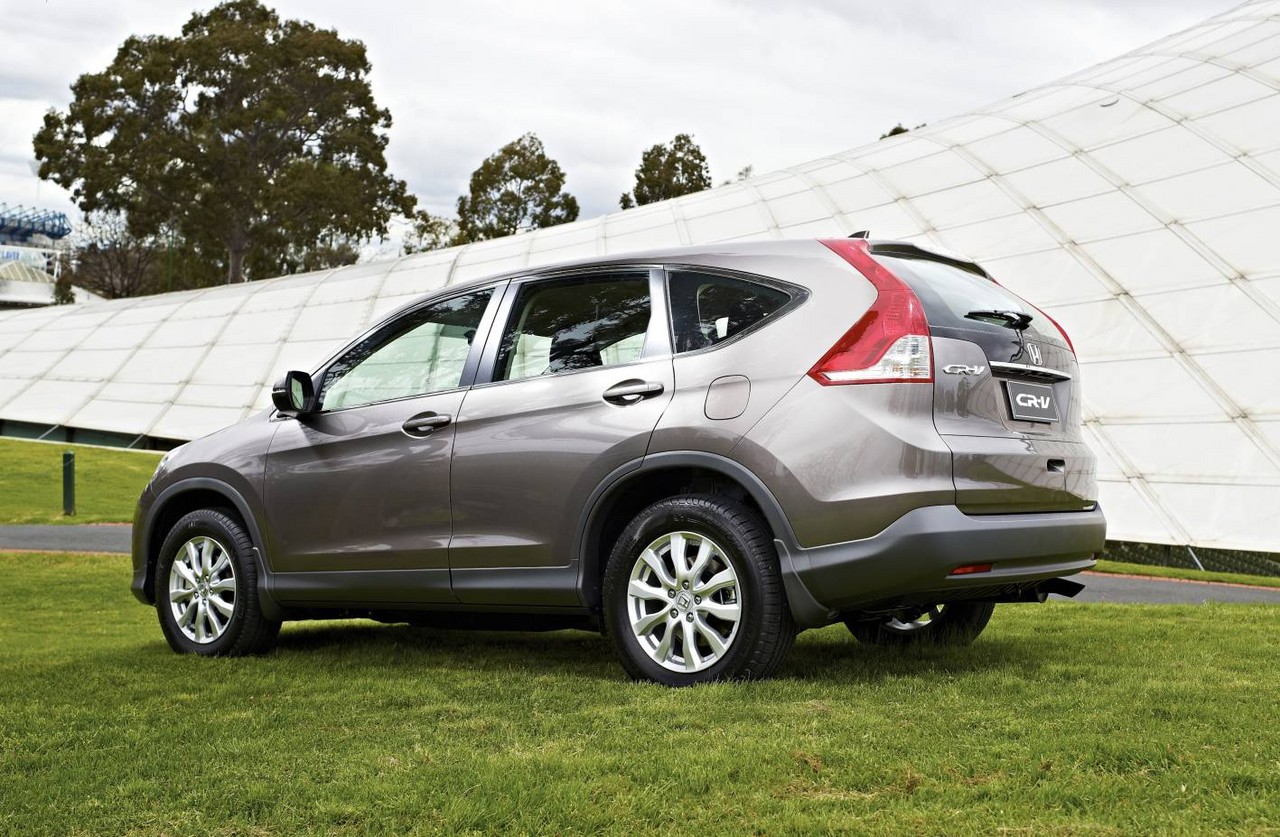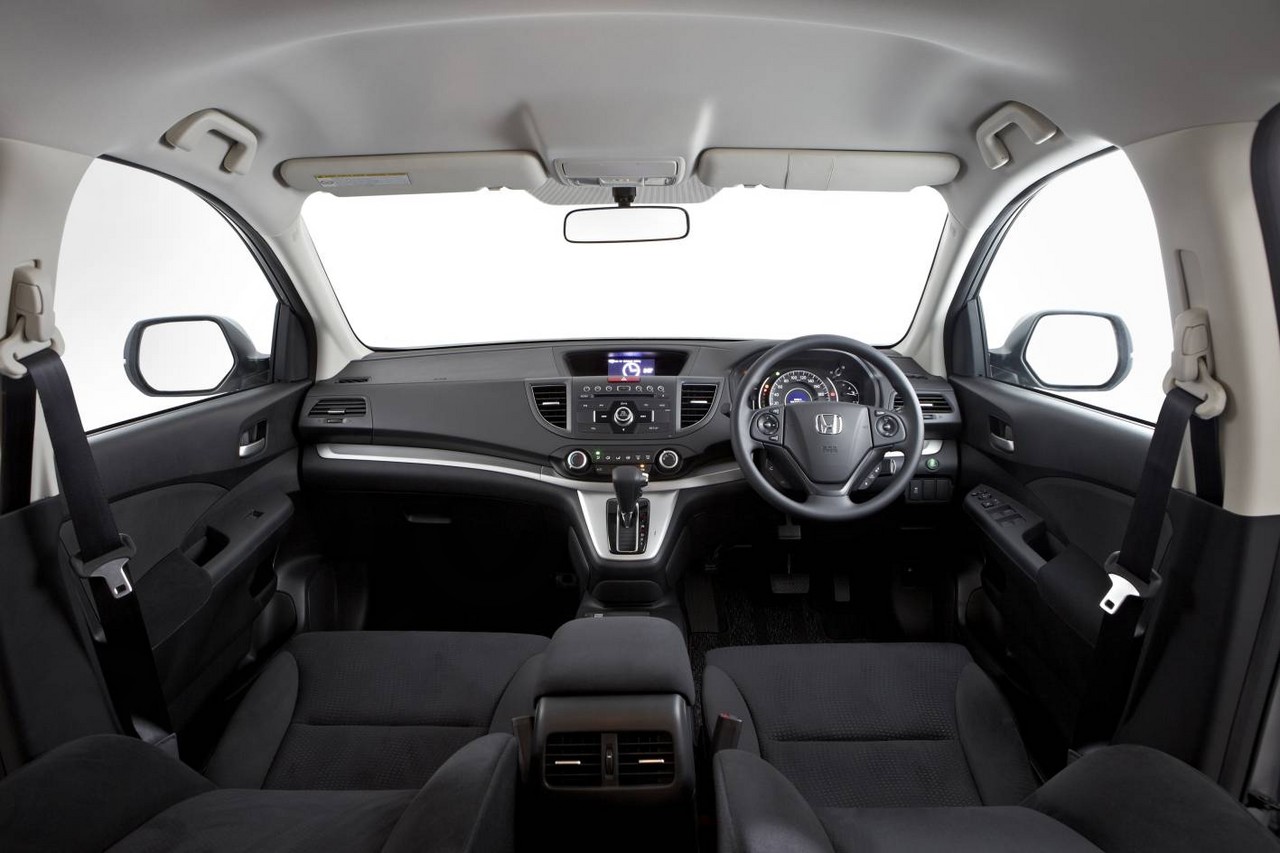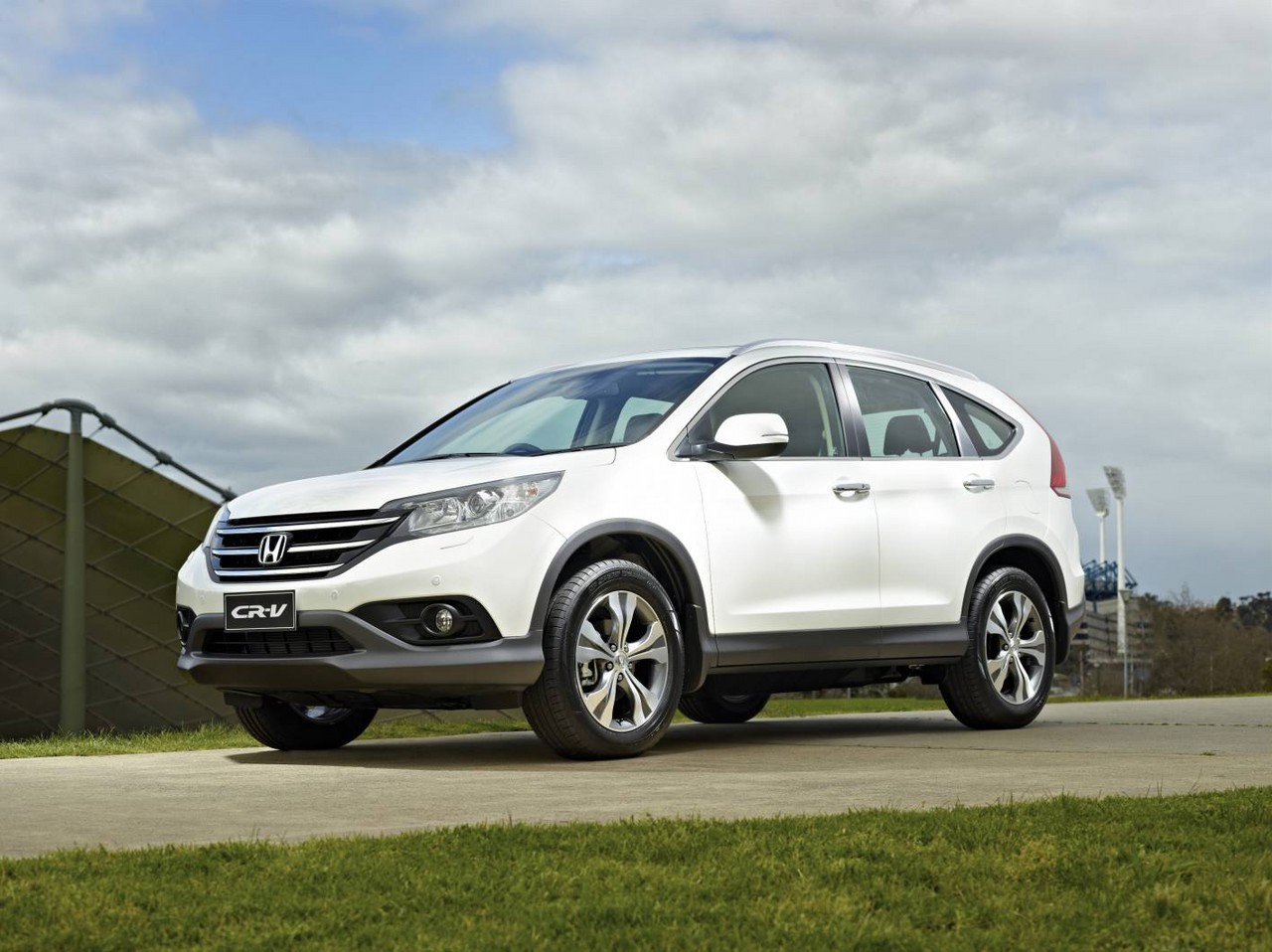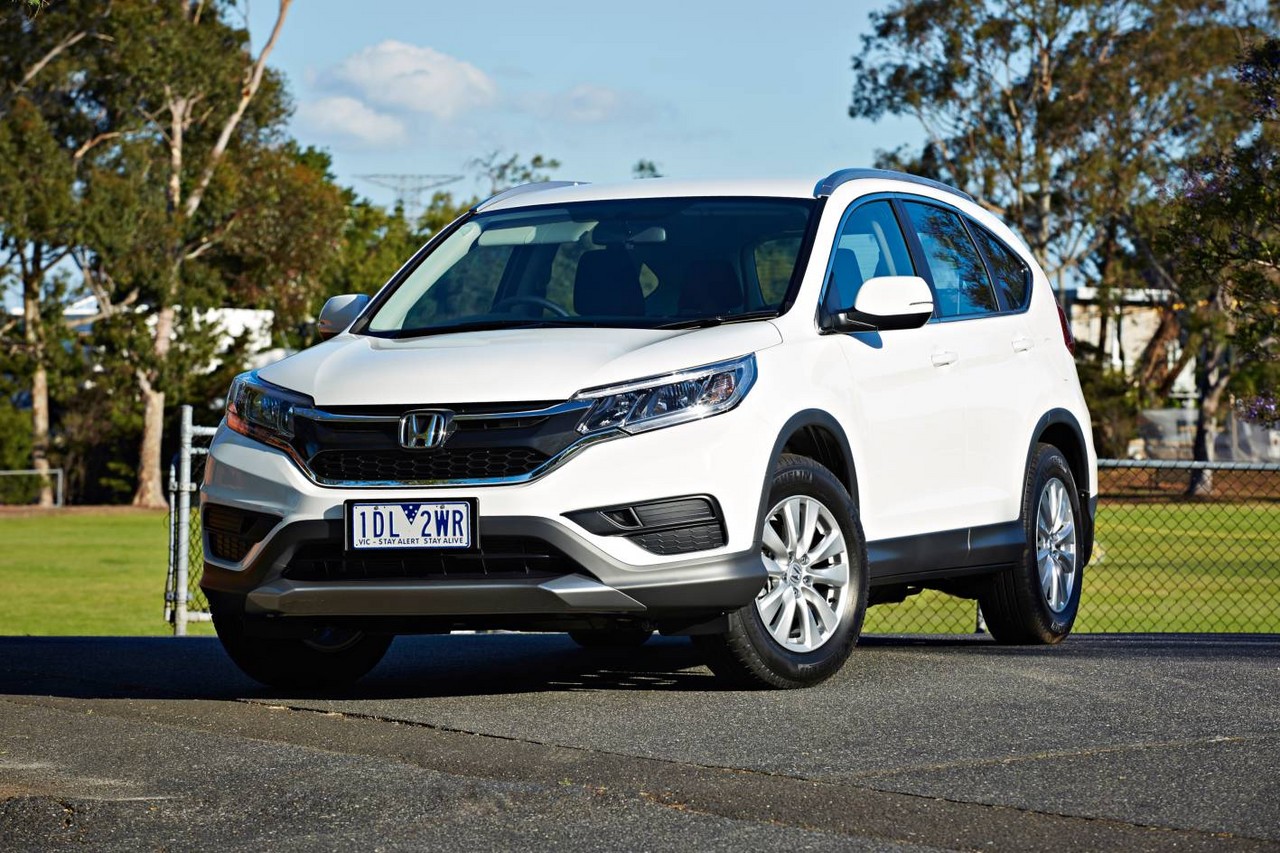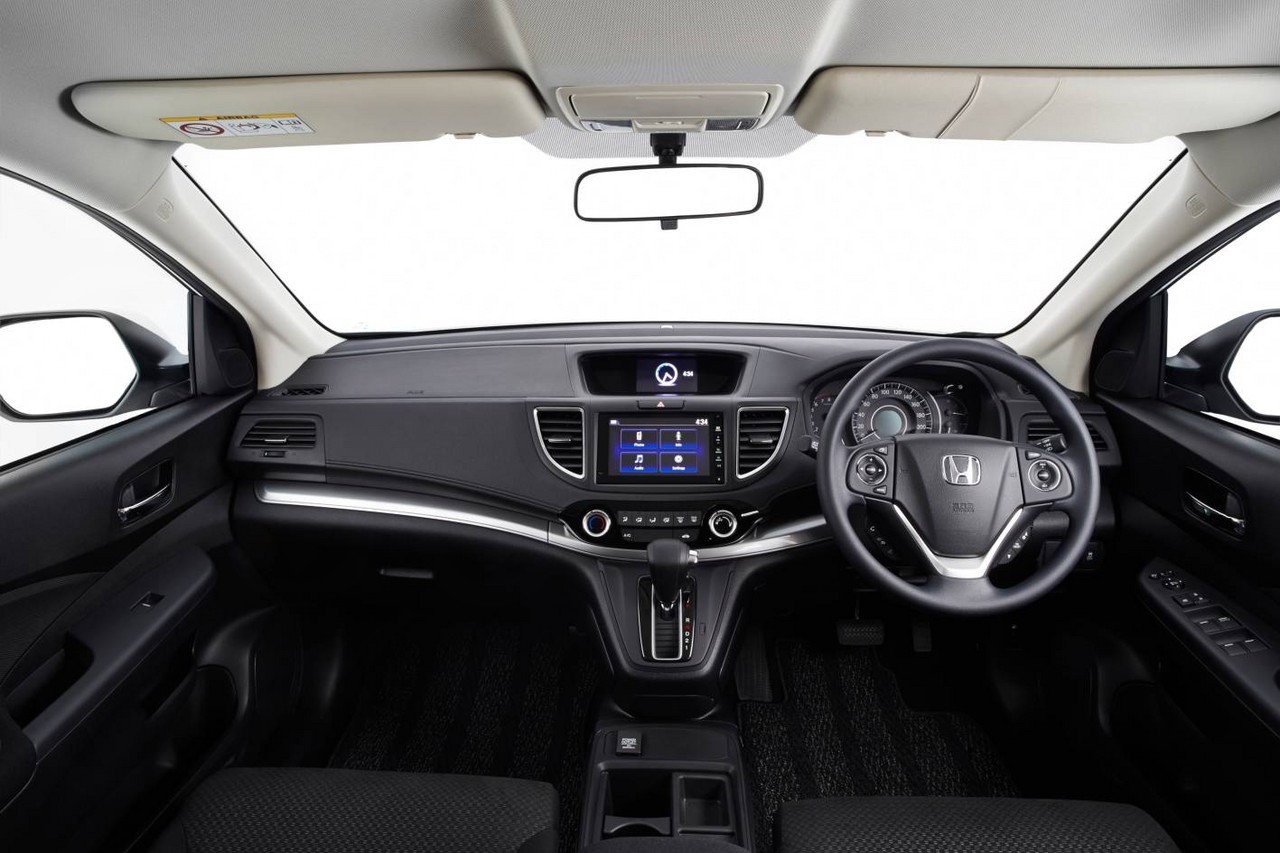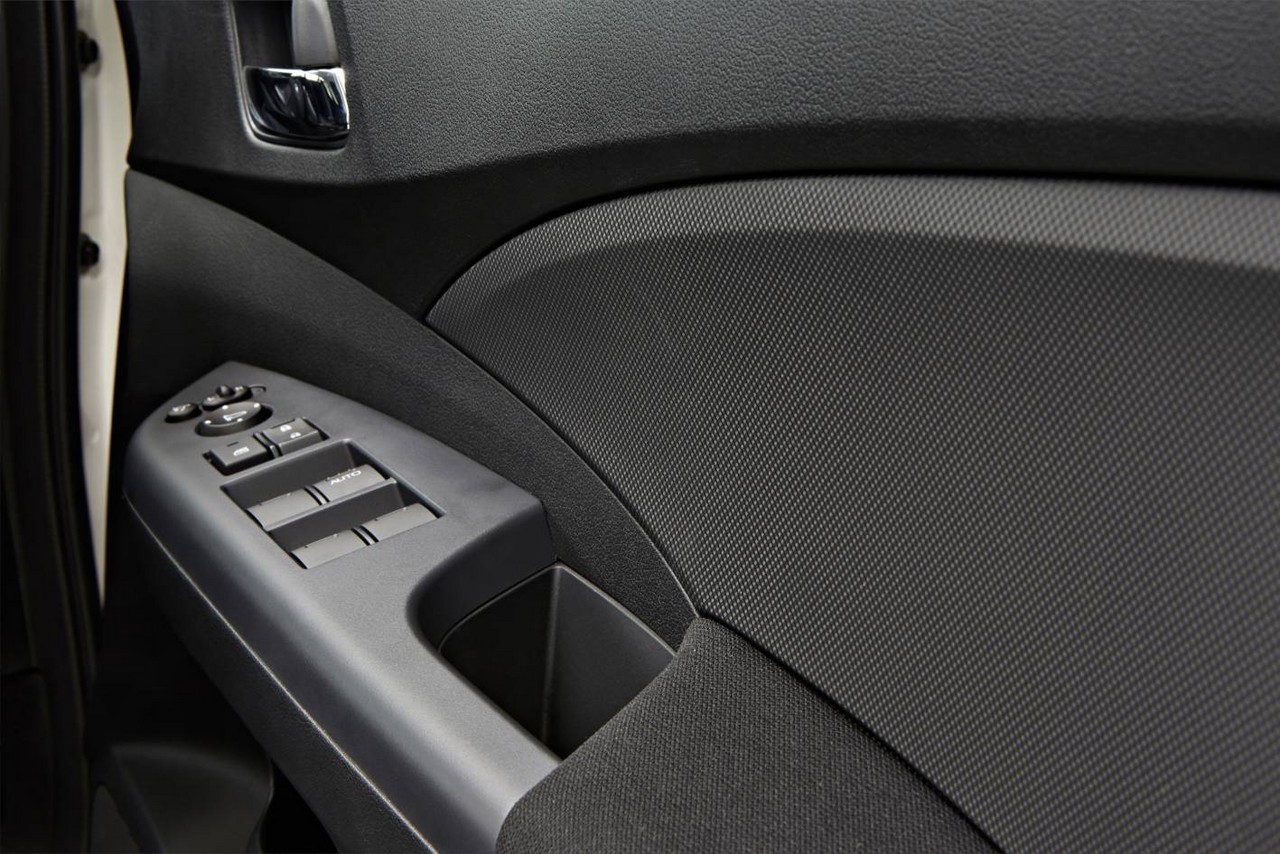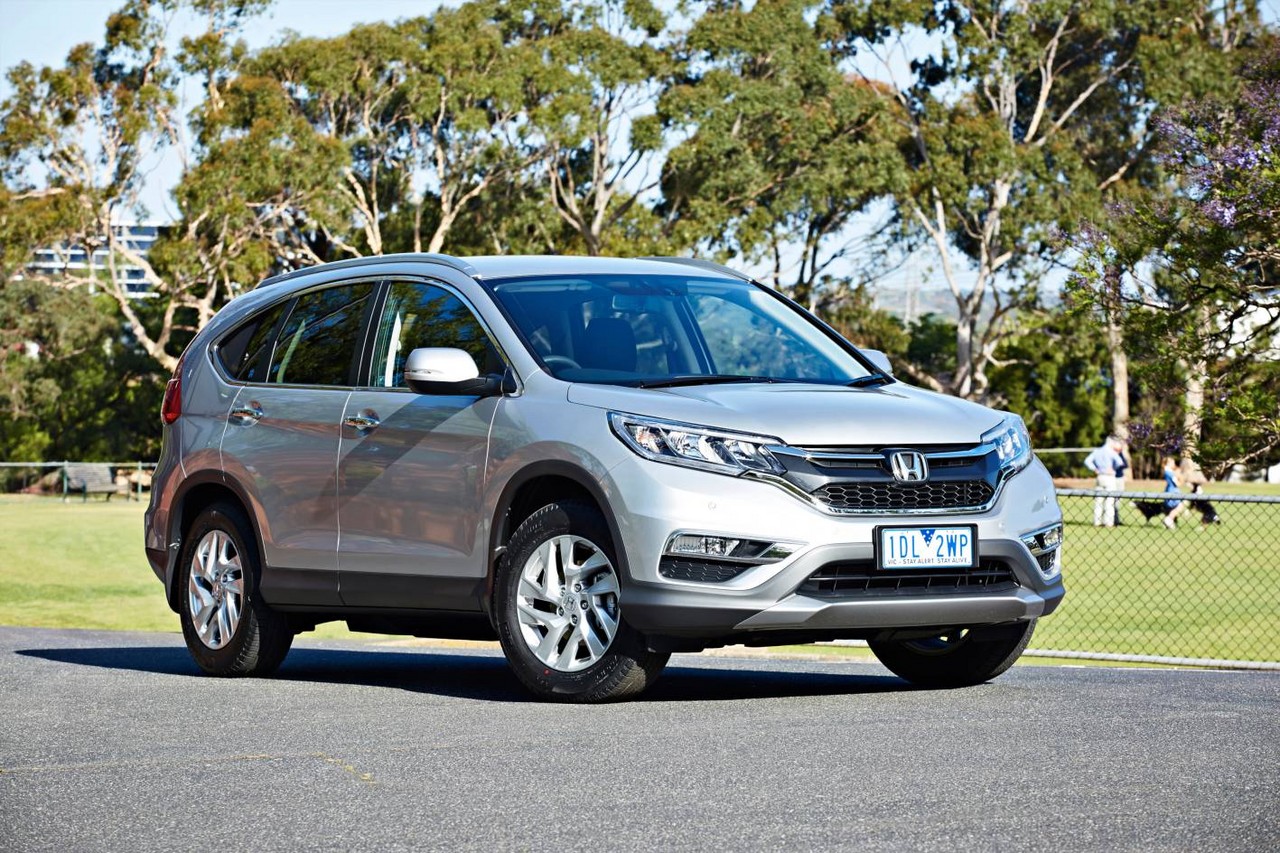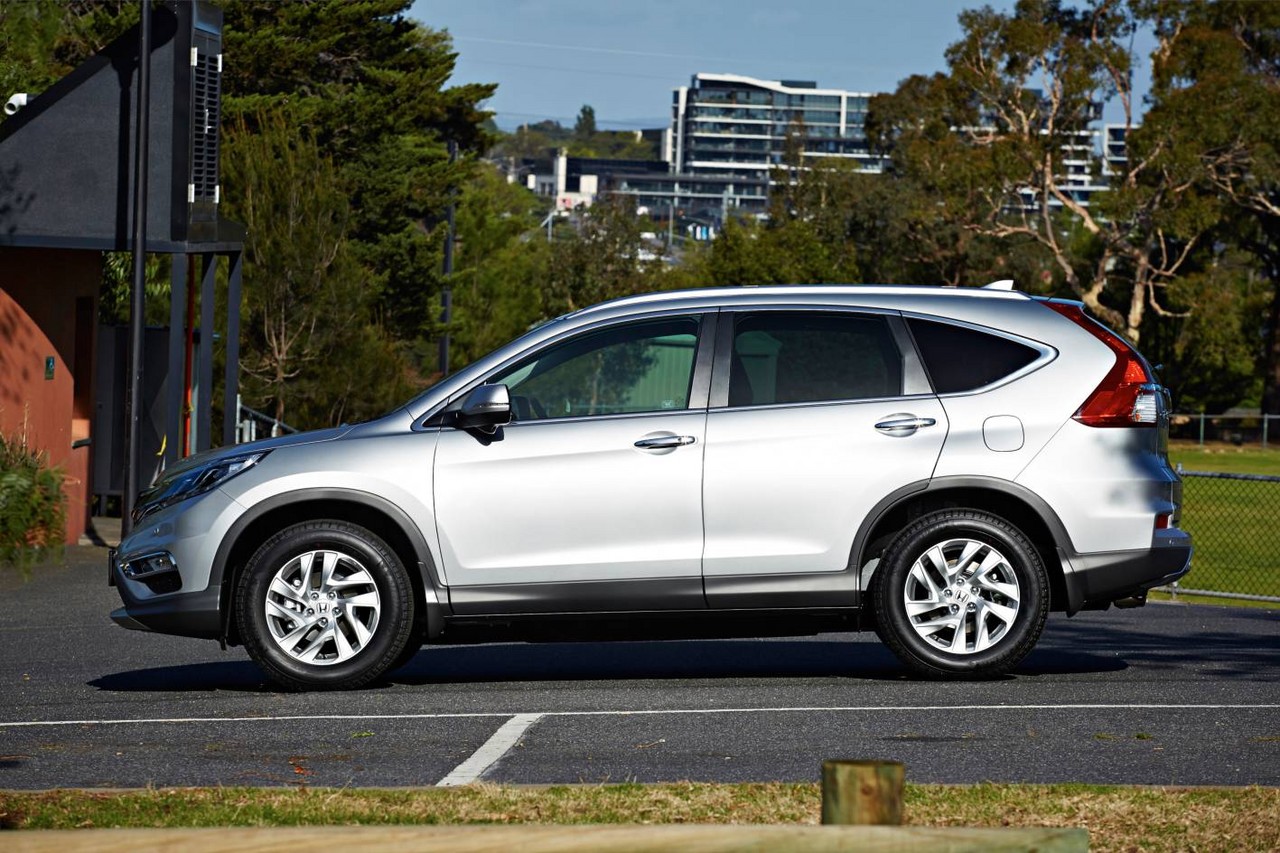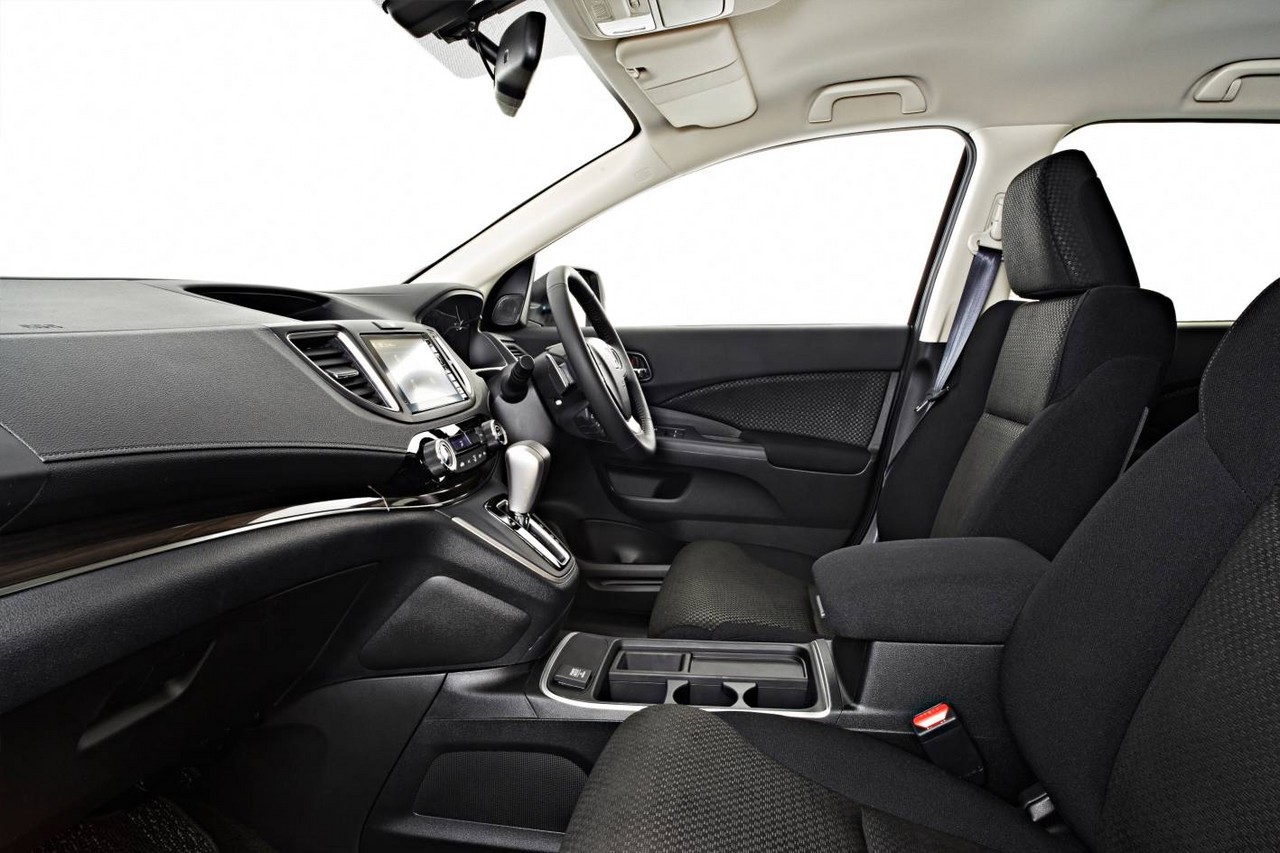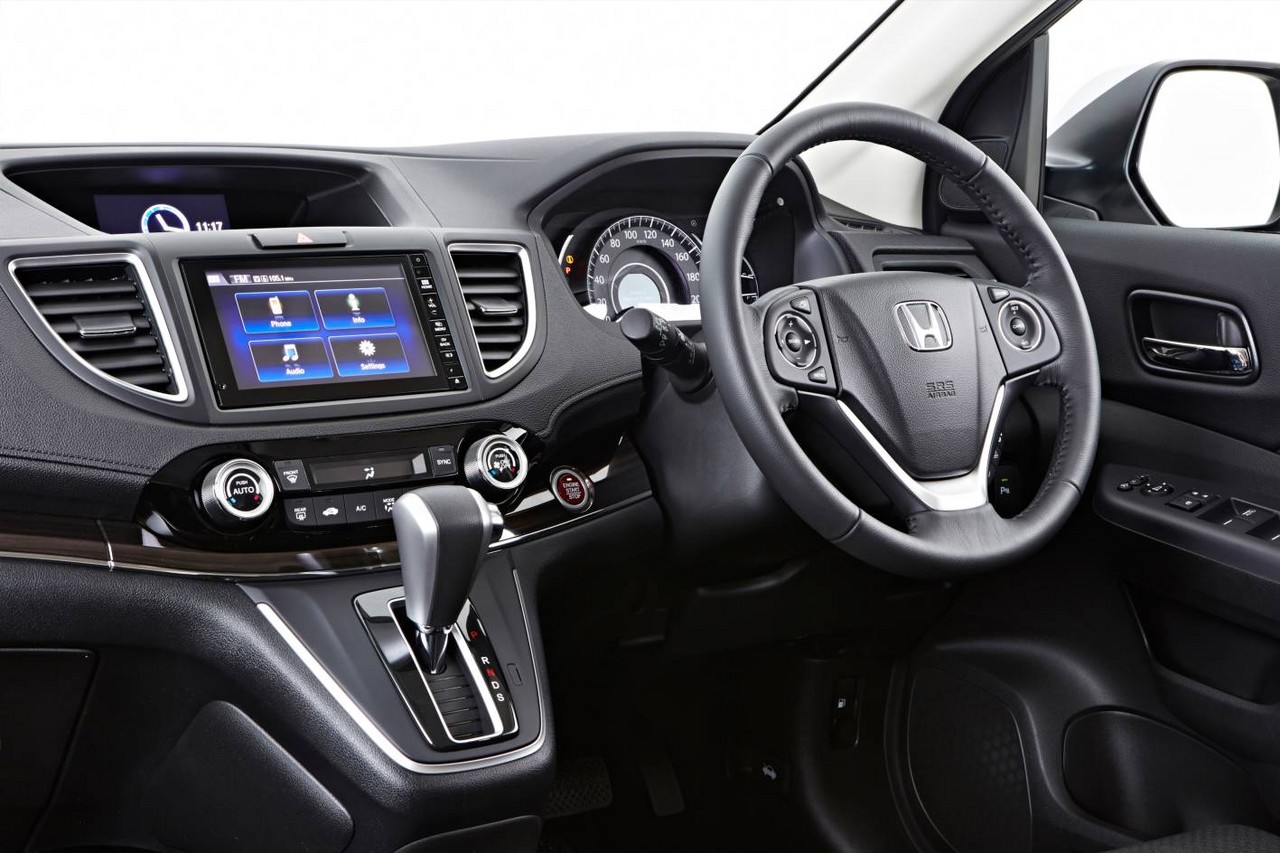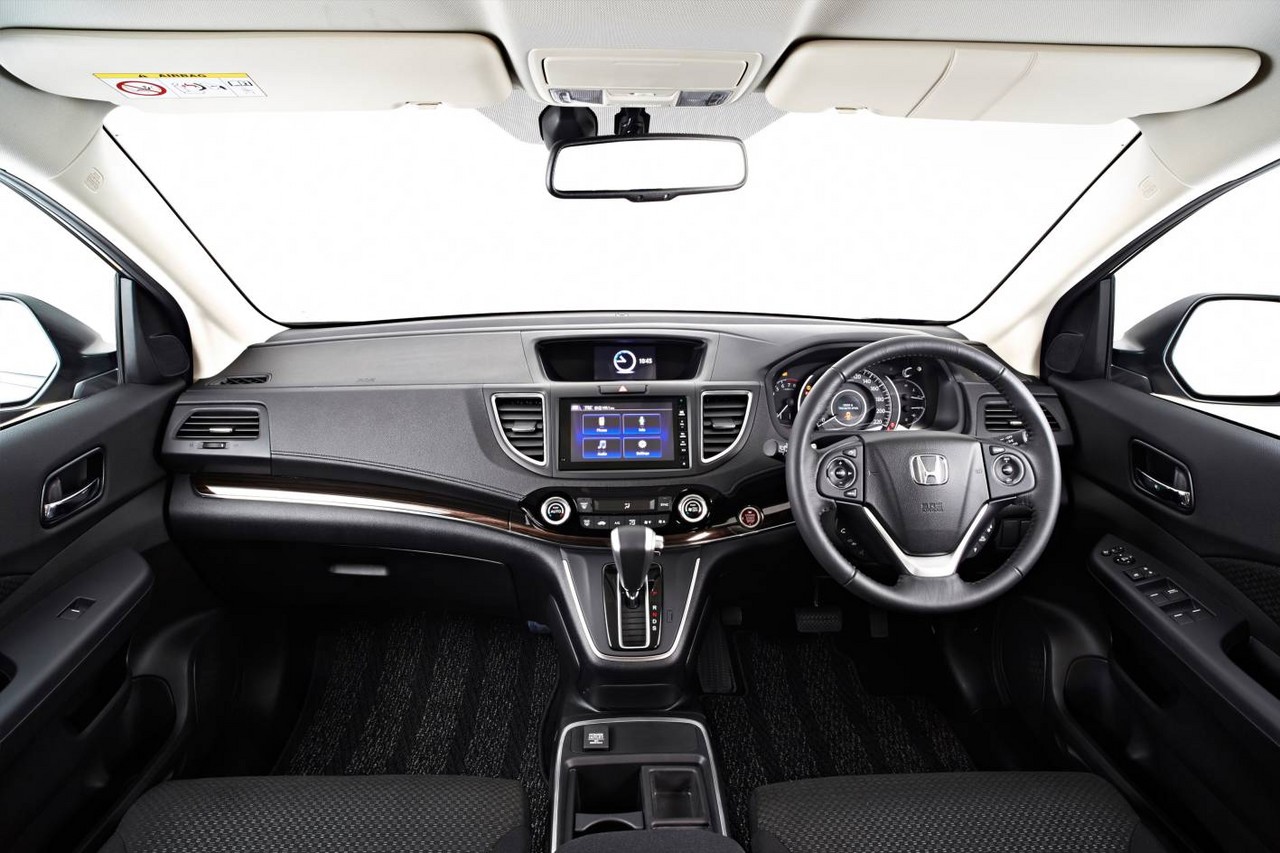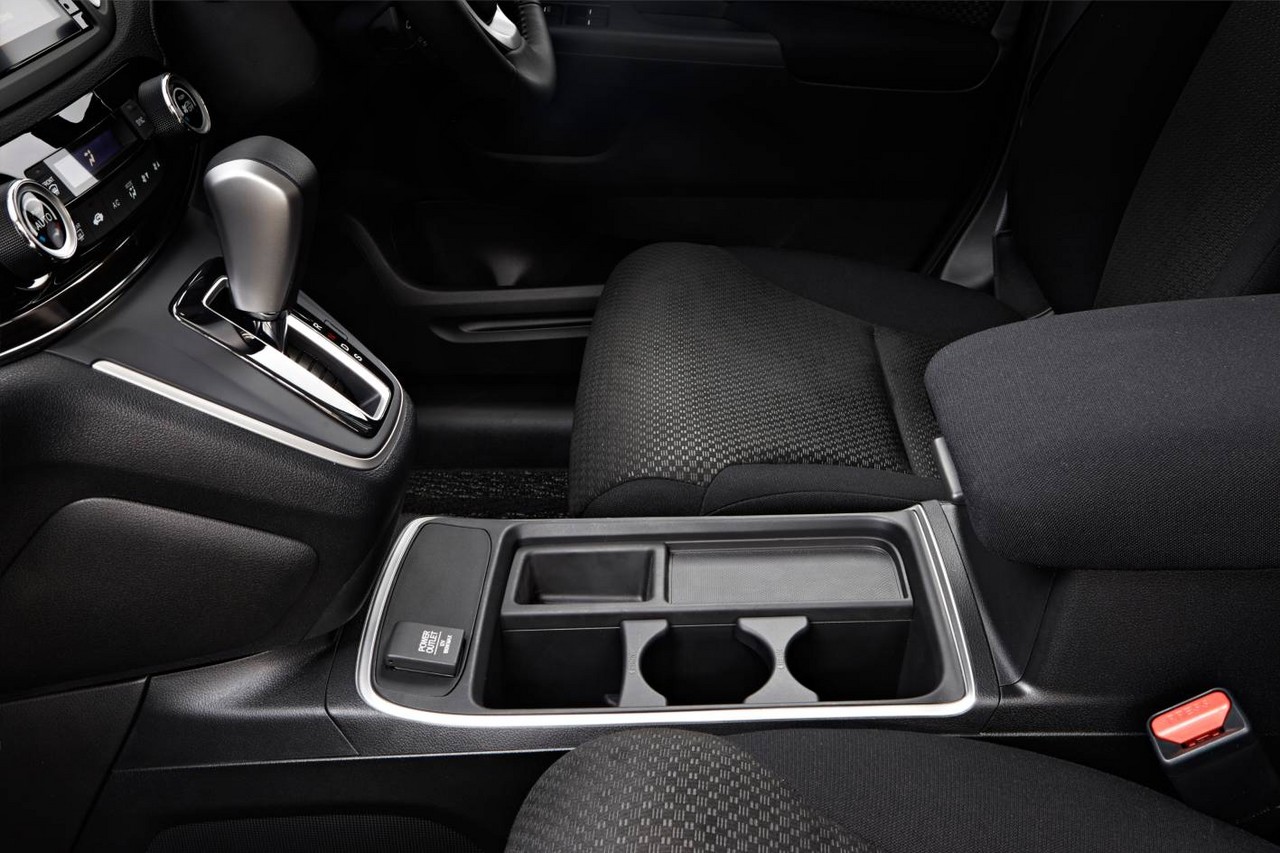
- Refined petrol engines
- Frugal turbo-diesel engine
- Spacious interior and versatile cargo area
- Accomplished ride/handling balance
- 2.0-litre petrol engine underpowered for open road
- Steering lacks precision around centre
- Flat seats lack support
- Tyre roar on coarse surfaces
Honda RM1.I, RM4.I and RE6.I CR-V (2012-14)
Overview
Released in November 2012, the fourth-generation Honda CR-V range initially consisted of the front-wheel drive RM1 CR-V and all-wheel drive RM4 CR-V models which were powered by 2.0- and 2.4-litre petrol engines, respectively, and manufactured in Ayutthaya, Thailand. In January 2014, however, the range was expanded with the all-wheel drive RE6 CR-V which was powered by a 2.2-litre turbo-diesel engine and manufactured in Swindon, UK.
R20A, K24Z2 and N22B engines
Of the engines,
- For the RM1 CR-V, the 2.0-litre R20A four-cylinder engine had an aluminium-alloy cylinder block and head, a single overhead camshaft (SOHC), four valves per cylinder, a compression ratio of 10.5:1 and Honda’s i-VTEC (intelligent Variable Valve Timing and Lift Electronic Control) system which consisted of:
- VTEC system which changed valve lift, timing and duration of the intake valves for low- and high- rpm (i.e. above 5000 rpm) profiles; and,
- Variable Timing Control (VTC) which continuously adjusted the intake camshaft phase;
- For the RM4 CR-V, the 2.4-litre K24Z2 four-cylinder engine had similar properties but differed in that it had double overhead camshafts (DOHC); and,
- For the RE6 CR-V, the 2.2-litre N22B diesel engine had an aluminium block and cylinder head, double overhead camshafts (chain-driven), a Honeywell variable geometry turbocharger with intercooler, common-rail direct injection (operating at 1600 bar), four valves per cylinder and a compression ratio of 16.3:1.
| Engine | Variant | Trans. | Drive | Peak power | Peak torque |
|---|---|---|---|---|---|
| 2.0-litre petrol I4 |
VTi | 6sp man., 5sp auto |
FWD | 114 kW at 6500 rpm |
190 Nm at 4300 rpm |
| VTi (Navigation) | 5sp auto | ||||
| 2.4-litre petrol I4 |
VTi, VTi-S, VTi-L |
5sp auto | AWD | 140 kW at 7000 rpm | 222 Nm at 4400 rpm |
| 2.2-litre turbo-diesel I4 |
DTi-S | 6sp man., 5sp auto |
AWD | 110 kW at 4000 rpm | 350 Nm at 2000-2750 rpm |
| DTi-L | 5sp auto |
Real Time all-wheel drive system
The Honda RM4 and RE6 CR-Vs were fitted with Honda’s ‘Real Time’ all-wheel drive system which utilised a multi-plate clutch. In normal conditions, drive was primarily directed to the front wheels. In the event that traction was lost, however, an electric motor would drive a single hydraulic pump to engage the clutch and thereby transfer torque to the rear wheels. The traction control system could also detect when the vehicle was ascending hills and apportion additional torque to the rear wheels.
Dimensions
Compared to the RE4 CR-V , the RM1/RM4/RE6 CR-V was 25 mm longer (at 4545 mm) and 5 mm taller (1685 mm), though width (1820 mm) and wheelbase length (2620 mm) were unchanged. Cargo capacity was 589 litres with the rear seats in place and increased to 1648 litres with the rear seats folded (an increase of 147 litres).
Chassis and suspension
Although based on the same platform as the RE4 CR-V , the RM1/RM4/RE6 CR-V body achieved a nine per cent increase in torsional rigidity, a seven per cent increase in bending rigidity and was 20 kg lighter. Furthermore, the CR-V had MacPherson strut front suspension and three-link rear suspension.
Safety equipment
Standard safety equipment for the Honda CR-V included dual front airbags, front side airbags, full-length curtain airbags, ABS, electronic brake force distribution, brake assist electronic stability control, traction control and front seatbelts with pretensioners and load limiters.
The Honda CR-V was fitted with a Motion Adaptive Electric Power Steering system (MA-EPS) which operated with the stability control system to detect instability in slippery road conditions and automatically initiate steering inputs that prompted the driver to steer in the correct direction.
From June 2013, the CR-V VTi-L variants were available with Honda’s Advanced Driver Assist System (ADAS) as an extra-cost option. ADAS consisted of the following technologies:
- Forward Collision Warning (FCW) and Collision Mitigation Braking System (CMBS): operating at speeds above 15 km/h, FCW and CMBS used millimetre-wave radar and a camera located in the windscreen to monitor the road up to 100 metres ahead. If FCW detected that there was a collision risk with the vehicle ahead, a ‘Brake’ warning would flash in the Multi-Information Display and an audible warning would sound. In its second stage, CMBS would apply light braking to reduce vehicle speed and alert the driver. In its final stage when a collision was assessed to be inevitable, CMBS would apply maximum braking force to reduce vehicle speed and the severity of the collision;
- Lane Keep Assist System (LKAS): used a camera to detect if the vehicle was departing from its lane without indicating and would automatically apply corrective steering inputs while issuing visual and audible warnings;
- Adaptive Cruise Control (ACC): enabled the vehicle to maintain a specified distance from the vehicle ahead and could apply up to a quarter of the maximum braking force to slow the vehicle.
Euro NCAP and ANCAP testing
In Euro NCAP testing , the Honda RE6 CR-V received a five star safety rating which included a 93 per cent adult occupant protection rating and a 74 per cent child occupant protection rating. In the offset crash test, there was a slight risk of serious leg and chest injury for the driver, and of serious leg injury for the front passenger. Maximum points were awarded in the side impact test and, in the more severe pole test, there was a slight risk of serious chest and abdominal injury.
In separate ANCAP crash testing , the Honda RM4 CR-V received a five star adult occupant protection rating with a score of 35.91 out of 37. In the offset crash test, there was a slight risk of serious leg injury for both front occupants. In the side impact and pole tests, however, maximum points were awarded.
Features: Honda CR-V VTi, VTi-S and VTi-L (petrol engines)
Standard features for the Honda CR-V included 17-inch alloy wheels with 225/65 R17 tyres, a four speaker sound system with a CD player, MP3/WMA compatibility and USB connectivity, an integrated hands-free Bluetooth phone system, air conditioning, cruise control, a reversing camera, 60/40 split and folding rear seats, remote central locking, power windows and mirrors, tilt and telescopic steering wheel adjustment, a trip computer and an immobiliser.
All-wheel drive models were further equipped with steering wheel gearshift paddles, variable intermittent wipers, a reverse tilt passenger door mirror, foot park brake, an alarm system, roof rails and a tonneau cover.
The CR-V VTi-S was further equipped with a six speaker sound system, dual-zone climate control air conditioning, satellite navigation, front fog lights, automatic headlights, rain-sensing wipers, rear parking sensors, a leather-wrapped steering wheel and an auto-dimming rear view mirror.
The range-topping CR-V VTi-L was distinguished by its 18-inch alloy wheels with 225/60 R18 tyres, leather seat trim, heated front seats, an eight-way power adjustable driver’s seat, a four-way power adjustable front passenger seat, xenon headlights with active cornering, front parking sensors and a power-operated sunroof.
Features: Honda CR-V DTi-S and DTi-L (diesel engines)
Compared to the VTi-S, the CR-V DTi-S was further equipped with a power adjustable driver’s seat lumbar support, daytime LED running lights and heated mirrors; the DTi-S, however, omitted roof rails.
Relative to the VTi-L, the CR-V DTi-L added driver’s seat memory settings, a proximity key, push-button start, ambient lighting, rear privacy glass and roof rails; the power adjustable front passenger seat and sunroof, however, were omitted.
2014 Honda CR-V Plus+
In July 2014, a limited-run Honda CR-V Plus+ model was released. Based on the front- and all-wheel drive VTi variants with automatic transmissions, the CR-V Plus was further equipped with 18-inch alloy wheels, front fog lights, front and rear parking sensors, automatic headlights and rain-sensing wipers. Visual cues for the CR-V Plus+ included metallic paint and distinct badging.
Brochures and specifications
- Brochure: Honda RM1/RM4 CR-V (December 2012)
- Specifications: Honda RM1/RM4 CR-V (2013)
- Specifications: Honda RE6 CR-V Diesel (2013)
Related links
- Honda News: All-New Honda CR-V Makes Australian Debut At AIMS (October 2012)
- Press Kit: Honda RM1/RM4 CR-V (2013)
- Honda News: Honda Adds A Diesel Variant To CR-V Range (November 2013)
- Press Kit: Honda RE6 CR-V Diesel (2013)
Honda RM1.II, RM4.II and RE6.II CR-V (2014-17)
Overview
Released in Australia in November 2014, the Honda RM1 and RM4 Series II (RM1.II and RM4.II) CR-V could be identified by their new grilles, LED daytime running lights and bumpers; a Brilliant Sporty Blue Metallic paint finish was also introduced. Inside, panels had a piano-black finish and chrome surrounds. For the RM1.II CR-V range, both the VTi-S and VTi-L variants were offered with the 2.0-litre petrol engine (see table below).
Powered by a 1.6-litre turbo-diesel engine that was mated to a nine-speed automatic transmission, the CR-V DTi-L was released in September 2015. Over the combined ADR 81/02 test cycle, fuel consumption for the CR-V DTi-L was 5.9 litres per 100 km.
| Engine | Variant | Trans. | Drive | Peak power | Peak torque |
|---|---|---|---|---|---|
| 2.0-litre petrol I4 |
VTi | 6sp man., 5sp auto |
FWD | 114 kW at 6500 rpm |
190 Nm at 4300 rpm |
| VTi-S, VTi-L |
5sp auto | ||||
| 2.4-litre petrol I4 |
VTi, VTi-S, VTi-L |
5sp auto | AWD | 140 kW at 7000 rpm | 222 Nm at 4400 rpm |
| 1.6-litre turbo-diesel I4 |
DTi-L | 9sp auto | AWD | 118 kW at 4000 rpm | 350 Nm at 2000 rpm |
Safety equipment
For the RM1.II and RM4.II CR-V, Honda’s ‘Advanced Driver Assist System’ (ADAS) was only available as an option for VTi-L variants with 2.4-litre engines and AWD.
Features
For the RM1.II and RM4.II CR-V, standard features were extended to include Honda’s ‘Display Audio’ system which included Bluetooth connectivity and audio streaming, an HDMI port and two USB ports. The reversing camera was also upgraded to include three modes: top-down, wide and normal.
The CR-V VTi-S gained front parking sensors, keyless entry (Honda’s ‘Smart Entry) and push-button start, though satellite navigation was omitted. The VTi-S was also fitted with Honda’s ‘LaneWatch’ system which consisted of an integrated camera that provided an 80 degree view of the left lane of traffic to aid blindspot monitoring.
Standard features for the CR-V VTi-L were largely unchanged.
2015 Honda CR-V Limited Edition
In September and November 2015, front- and all-wheel drive Honda CR-V Limited Edition models were released. Based on the CR-V VTi, the CR-V Limited Edition was further equipped with 18-inch alloy wheels, front fog lights, front and rear parking sensors, automatic headlights, rain-sensing wipers and Honda’s ‘LaneWatch’ blind spot monitoring system. Visually, the CR-V Limited Editions could be identified by their side steps and ‘Limited Edition’ badges.
2016 Honda CR-V Limited Edition
Returning in June 2016, the Honda CR-V Limited Edition was again based on the VTi variant and available in front- and all-wheel drive. Compared to the VTi, however, the CR-V Limited Edition added Honda’s ‘LaneWatch’ blind spot monitoring system, 18-inch alloy wheels, front fog lamps, parking sensors (front and rear), dusk-sensing headlights, rain-sensing wipers, side steps and a rear roof spoiler.
Brochure
Related links
